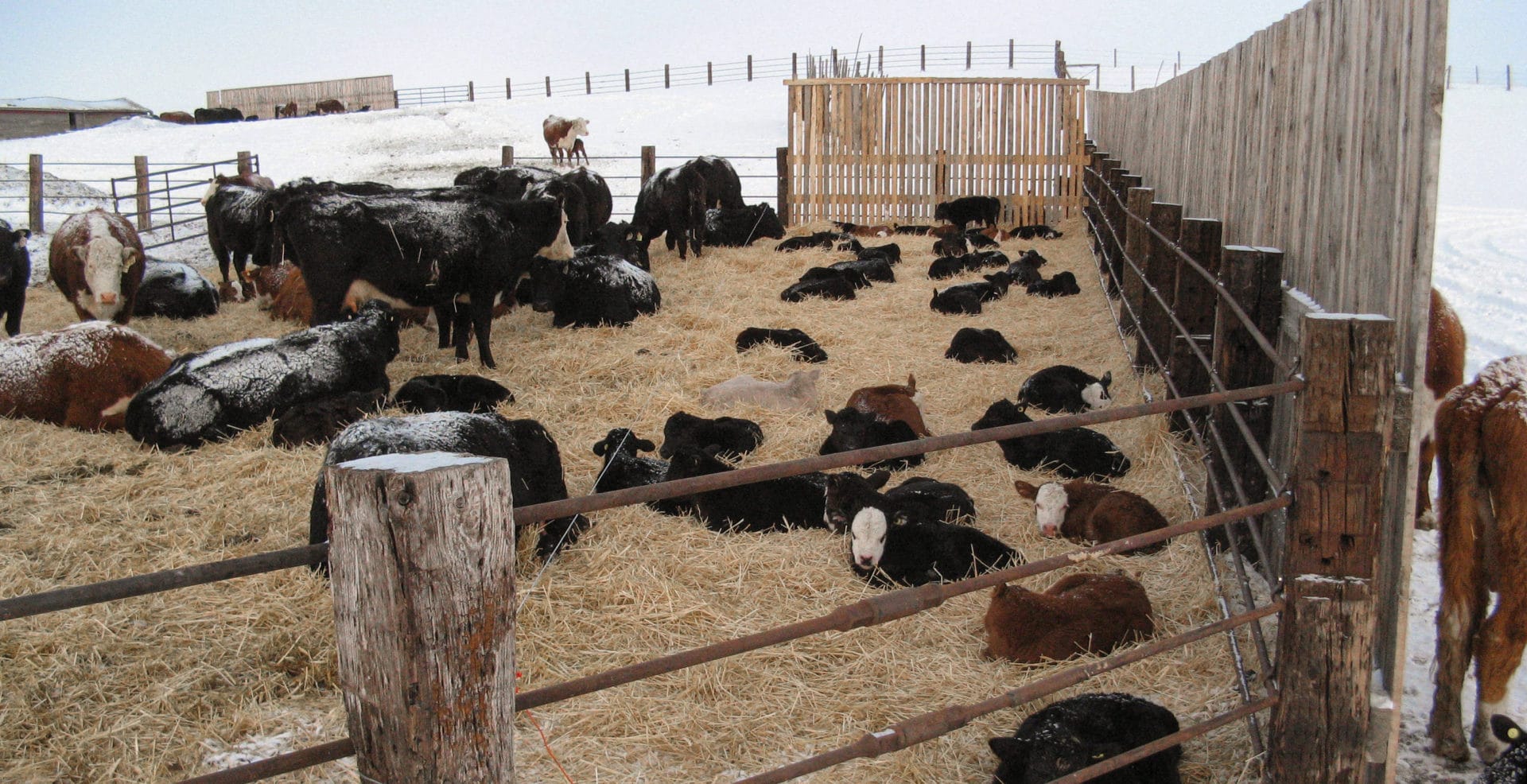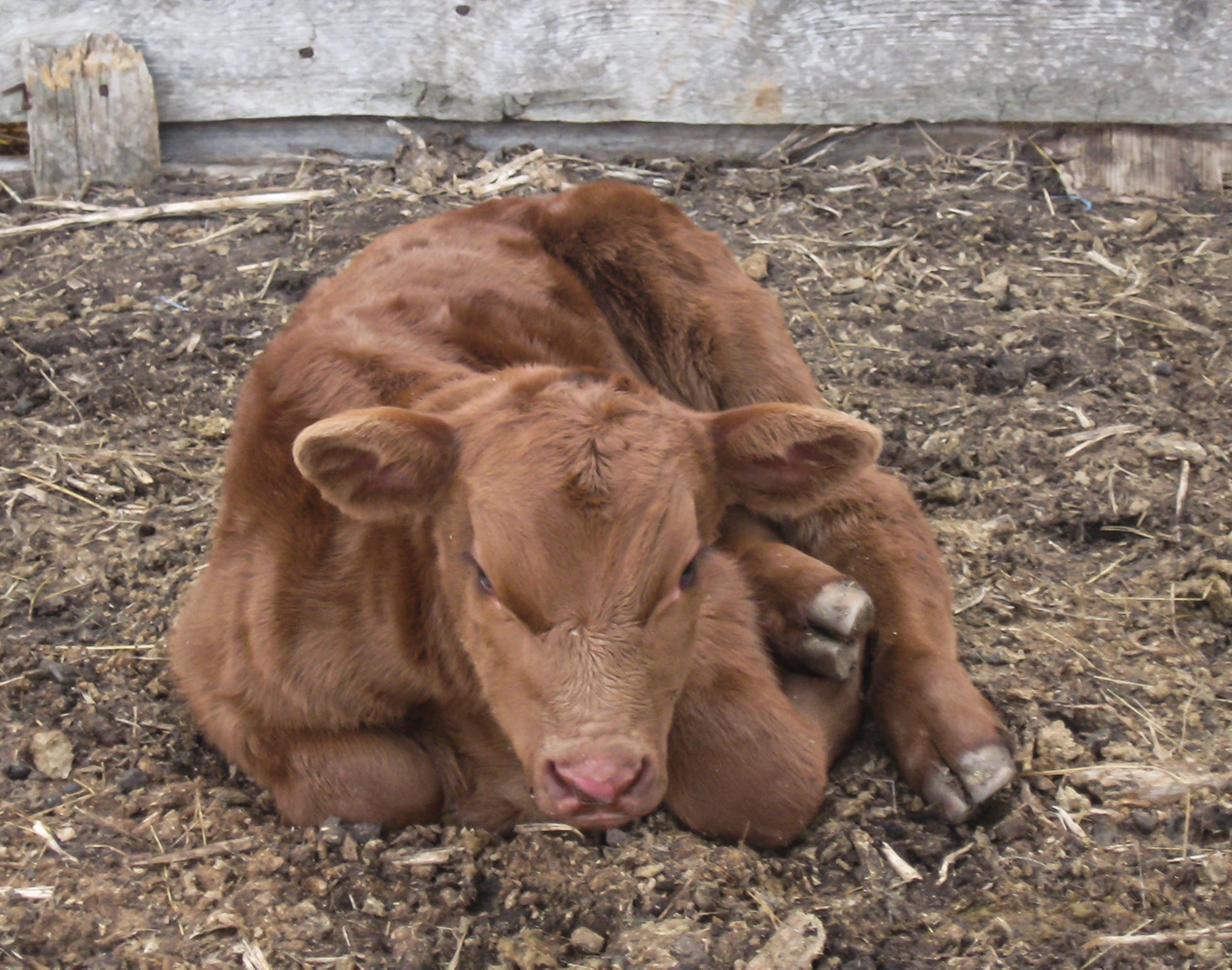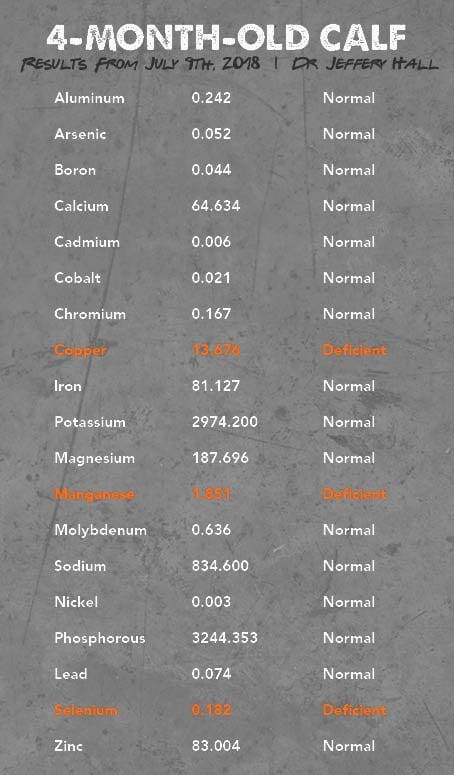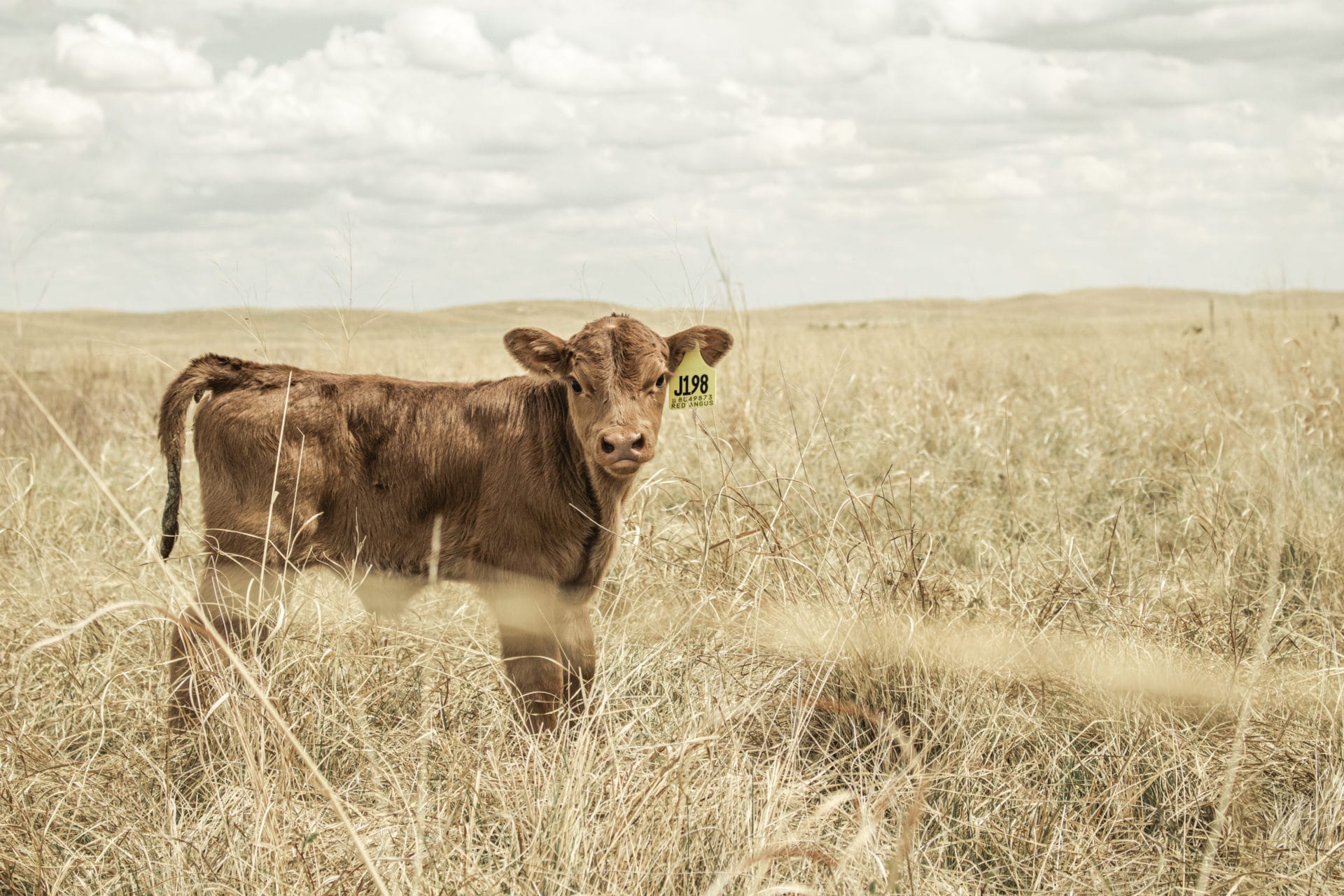Last updated on October 5th, 2023 at 03:17 pm

DERIVED FROM: Webinar presentation by Dr. Jeffery Hall
Toxicology, Veterinary Diagnostics, and Mineral Nutrition
Former Professor at Utah State University.
As we go through the winter, it’s especially important to pay attention to spring calvers; next spring's calf crop. It’s essential to set the cows up so they’re fit to have healthy calves and in a position to go into next year in good shape.
Why? Well, let’s dive in.
The main topics we’ll cover include (click to jump straight to them):
- Common mineral deficiencies in calves (copper, zinc, manganese, selenium, & more)
- Effects of mineral deficiency
- Mineral deficiency causes
- Vitamin deficiency in calves (Vitamins A & E)
- Deficiency impacts on calf immunity
- The economic impact of calf mineral deficiency
Common calf mineral deficiencies
Copper Deficiency
Across North America, I’ll see as little as 50% of the calves that I test in certain areas are deficient, and up to 70% or 80% of the calves that I test from other specific geographic areas are copper deficient. It's not a unique problem to specific areas of North America. It's pretty much nationwide across the US, Mexico, and Canada; copper deficiencies are very common.
Selenium Deficiency
Selenium deficiencies have more geographic distribution. In some areas, greater than 70% of the calves have selenium deficiencies. In other areas, I'll see as little as 5% or less, especially in the upper central Great Plains, where I see more selenium excess than I do deficiencies. I see selenium toxicity in the north-central U.S. and up into south-central Canada. Selenium excesses occur in areas that have high seleniferous soils.
Manganese Deficiency
In rare occurrences, I see slightly more low manganese in calves than I do in adult animals. In adult animals, generally less than 1% of the beef animals that I test have low manganese, where in beef calves it's about 2.8%.
Zinc Deficiency
Zinc deficiency varies from as little as 2% in most areas of North America in a typical year, to as high as 12%, under certain environmental stresses. I've been watching this through my career, and I can pretty much pinpoint the times when there will be more zinc deficiencies. They’re typically directly associated with grazing periods during severe drought stress or for a period of time after severe drought stress. There's not a lot of research in this arena to explain why, but we do know that certain drought stresses cause changes in some of the mineral composition in the soil matrix. That's likely what is happening with zinc as well. As you aerate the soil deeper during severe drought stresses, some of the zinc will convert to zinc oxide, and that's a chemical form that plants cannot take up.
It takes a period of time after the break of a major drought, when more moisture gets into the soil, for zinc deficiencies to decrease. Only once the soil has more moisture are the microbes able to be in a more anaerobic environment so they can convert zinc oxide back to ionizable zinc that the plants can take up. So, I do see more zinc deficiencies during periods of severe drought stress, typically prolonged, multi-year drought stresses, in areas where there is more oxygenation deep into the soil.
Cobalt Deficiency
Cobalt deficiency is one I get a lot of questions on. Low cobalt is most common in late-term fetuses and early neonates. And that's likely a secondary effect of the fact that those early neonates just haven't got colostrum milk yet. Cobalt is a necessary component of cobalamin, one of the B vitamins, which generally have a pretty good concentration in colostrum milk. Many times, low cobalt levels simply mean that the calves just haven't got colostrum yet and it's not a true cobalt deficiency.
Why are mineral deficiencies in cattle more common than they used to be?
Investment
In 2008 and 2011 when the economy crashed, I saw a lot of people back off and use either no mineral at all or very cheap mineral. And because of that, I also saw increases in the number of deficiencies globally.
There is always some variability year to year, depending upon what people are willing to spend. In the long run, though, the people that decide to cut back on mineral supplements end up losing more money than they're saving because of the deficiencies it results in.
Frequent Testing
The most common reason that there are more deficiencies than there used to be is that people test more frequently.
If you don't test, you can’t identify it. Historically, people identified all kinds of bacterial or viral agents that caused disease, and attributed all of the side effects to the infectious disease ideology. But in fact, one of the reasons the animals succumbed to the infectious diseases was because their immune systems were not working well enough due to the fact that they were mineral deficient.
Because more people test their animals that are sick or dying, we see deficiencies more commonly than we used to.
Production Output
We've also increased production output. If you look back 35 or 40 years ago, many beef producers weren't preg checking. A cow was given a year off every once in a while, which allowed her to build her mineral balance back up and increase her body stores.
Today, beef producers have to be more economical. In order to break even and even make money, they have to have a calf out of every cow. The cows that come in open are not given any time off to build their system back up.
We've effectively asked a single cow unit to produce about 150% of the weaned calf product that we asked a cow unit to produce 40 years ago. When we give her the same groceries to do it on, and without supplementation, that's just not a viable situation.
Nature
The other thing is, we've altered nature.
Historically, my grandfather used to calve everything out in the spring, in May. My dad backed everything up to the end of March or beginning of April, and then my older brother, who’s on the same ranch, is calving everything out at the end of February now.

If you stop and think, when do wild ruminants have their babies? Animals have evolved to be the most efficient at production and survival under their natural conditions, and wild ruminants generally have their offspring 30 - 60 days after spring green-up.
Most spring-calving beef operations are asking their cows to produce their calves 30 - 60 days before anything has a chance of turning green. From a nutrition standpoint, that's probably the worst time of the year to be dropping a baby, unless you're supplementing to get around that.
What are the ultimate effects of mineral deficiencies in calves?
What do these deficiencies mean for you and your operation? The biggest financial cost of mineral deficiencies is what it does to calves.
- Poorer growth rates, which cause animals to get sick easier because they have a weak immune system.
- Weak immune system & poor vaccine response, which causes more disease. The first thing an animal does when it gets sick is it quits eating well. Then, it starts burning excess energy just to try to survive.
- More susceptible to diarrheas, pneumonias, and other neonatal and juvenile illnesses, which means they won’t be as productive as animals that have a good vitamin/mineral status that allows their immune system to be fully functional.
White Muscle Disease In Calves
Selenium deficiency causes white muscle disease. This disease can develop in any muscle in the body.
The most active muscle in a young calf’s body is actually its tongue. Many people think it’s the heart, but although the heart is continuously beating, the most metabolically active muscle in the body of a young calf is its tongue because of the severe muscle strain that is put on it during the nursing process.
If calves develop white muscle disease in the tongue, they can’t nurse well. If the disease develops in the heart, calves could die of heart failure.

Calves Should Be Born With Higher Body Reserves Than Adults
Why? In the first 90 days of a young calf’s life, over 95% of its diet is milk.
How much copper, zinc, or selenium actually comes through in the mother’s milk? It's not zero, but it's close to it. If the mother cow is deficient in any of these minerals, the calf receives even less, which means it starts out its life with insufficient nutrients.
A healthy, rapidly growing calf should at least triple its birth weight in the first 90 days of life. But, if it's getting almost nothing in its diet and it triples its body size by dilution alone, it will become mineral deficient. That’s why a calf needs higher body reserves than an adult when it starts out; it grows extremely fast in those first few months.
A cow actively moves mineral to the fetus during gestation, even if it’s at her own expense. In other words, a cow will move mineral to the fetus to try to ensure that the calf is born with good, high body reserves, even if it causes her to become mineral deficient in the process.
Example: A normal, adult animal should have a copper concentration of 25 - 100 ppm in its liver. If I test a three-day-old calf that has died and it has less than 65 ppm, I call it deficient. Even though it is not technically deficient today, it has deficient body reserves.
Mineral Deficiency Causes
Maternal Deficiency
Maternal deficiencies are most commonly due to inadequate intake or interferences. For example, sulfur, iron, selenium, or excess molybdenum can interfere with copper absorption. When supplemented, these minerals have to be given at the appropriate balance.
If you identify a mineral deficiency, it doesn't mean you just need to supplement that one mineral. You need to supplement the mineral components in appropriate ratios because you could over-supplement copper in a copper-deficient case, only to induce a deficiency in a different mineral because the ratios are off.
Neonatal Deficiency
A deficiency in a neonate is caused by a maternal deficiency, which means Mama ran out and there was inadequate last trimester movement to the fetus. Almost 90% of the mineral that gets moved to the fetus occurs in the last trimester. That’s why the third trimester is a very critical time period that requires a really good quality mineral supplementation. It is the best way to ensure that the cows are getting enough nutrients, which they can then pass onto the calves to make sure they are born with full buckets. Then, during those first few months of the calf’s life when it doesn’t get much in its diet, it still has a high enough nutrient body reserve that it can grow rapidly without becoming deficient.
A BREAKDOWN OF FETAL DEVELOPMENT
From the day the cow conceives to the day she calves out, it’s crucial to provide the highest quality nutrition to her, which essentially, is for the calf. That way, the calf will be stronger and more efficient with healthy organs not only when it is born, but for the rest of its life.
Juvenile Deficiency
A juvenile deficiency can be caused by one or both of the following:
- A depletion or dilution of what Mama gave the calf from the paddock reserves
- Inadequate intake of mineral once calves start grazing and eating mineral supplement on their own
- Mineral interferences
If a calf is born with 65 parts per million in the liver, over the three month period of time that the calf is growing, that mineral concentration slowly becomes diluted. By the time the calf starts grazing and taking in mineral on its own, it can be down to 25 - 30 ppm (which is at the lower end of ‘normal’). The calf is still at a time period in its life where it's growing rapidly, so if it's not getting adequate nutrition in its diet, it will continue to go down from there as it grows.
Oftentimes, calves will become depleted between 2 and 4 months of age. That's also the time period when there are more health effects in juvenile calves, like summer pneumonia (also known as dust pneumonia). A vast majority of the animals that I test at this age are mineral deficient. Their immune systems are not adequate to protect them against disease, and they succumb to respiratory diseases that they otherwise might have been able to fight off on their own if they had been provided sufficient minerals and vitamins.
Testing for cattle mineral deficiencies
The liver is the sample of choice for testing. Many people want to draw blood because it’s easy. But, serum is not always the best sample for analysis, especially with copper, which is the most common deficiency we see. You can take groups of animals that are severely copper-deficient systemically, and their serum values may still be in the normal range. You can take animals that have excess copper, and oftentimes their serum values are still in the normal range. This proves that serum is not a good indicator of copper status, and it can be a question of validity with zinc status as well.
Mineral Excess
Copper
I see copper excesses commonly in dairy cattle due to over-supplementation. If you feed excess copper, it can actually interfere with iron, zinc, and selenium. There again points to the fact that you need minerals at appropriate ratios and ration. Copper excess can cause mild to severe functional liver changes.
Copper excess isn’t as common in beef calves, but I do occasionally see them when people decide to use injectable products instead of dietary products. Because they inject their calves two or three times, it can end up creating an excess.
Selenium
There are known seleniferous areas, which means there is naturally high selenium in the environment, soil, or sometimes in the water. I see selenium excesses more commonly in these areas, which include:
- Northeastern Colorado
- Eastern Wyoming
- Eastern Montana
- The Western Panhandle of Nebraska
- Western parts of North and South Dakota
- Areas in south-central Canada
Excess of selenium can actually be as dangerous as selenium deficiency. Selenium poisoning adversely affects the exact same organ systems that selenium deficiency affects. Excess selenium can cause:
- Immune system dysfunction
- Musculoskeletal damage, like white muscle disease (just like a deficiency does!)
- Reproductive failures and abortions
- Interference with copper and zinc absorption, which can then cause those deficiencies to become worse
Vitamin A and E deficiencies in calves
Vitamin Deficiency Symptoms
Because these vitamins are critical in a number of different immune system components, many of the clinical signs of Vitamin A and Vitamin E deficiencies are similar to mineral deficiency symptoms. There are some differences though, and Vitamin A and Vitamin E deficiencies can cause the following:
- Poor growth rate.
- Weak calves. Especially with a Vitamin A deficiency, calves seem to be ‘poor thrivers’; they just have trouble getting any energy.
- Poor immune system function.
- White muscle disease (Vitamin E). Note: Vitamin E deficiency looks just like a selenium deficiency. It causes white muscle disease, which can also cause calves to appear weak and have trouble getting up and thriving.
- Poor digestive tract integrity (Vitamin A). Vitamin A is a critical fat-soluble vitamin for normal cell division, and the cells that divide the fastest in the body are the cells that line the digestive tract. Vitamin A is also necessary for the tight conjunctive bridges between those cells that help form that digestive tract barrier. With a deficiency, cells don’t divide as rapidly and they don't have as tight of junctions between the cells, so opportunistic bacteria can actually invade. Ultimately, it causes diarrhea, and the calves are don’t respond much to treatments.
- High death loss within the first 10 days of life (severe Vitamin A deficiency).
One of the worst Vitamin A deficiency cases that I ever worked on was with a guy who was running about 1,400 mama cows. He had 200 head of replacement heifers that he had bred to calve out 30 days ahead of his main herd. He believed this would give them an extra 30 days to clean and get onto the same breeding cycle as his main herd.
By the time he had 50 calves on the ground from the 200 head of replacement heifers, over 80% of them broke with diarrhea within the first 5 - 7 days of life. 75% of the calves that had diarrhea died.
When he brought them into the lab, we identified Crypto, E. Coli, Klebsiella, and a wide variety of opportunistic pathogens. When we see this sort of thing, I always look to the immune system as being the primary cause; when there are multiple factors and multiple disease entities causing problems in the same group of animals.
We looked at the mineral status first, and that looked great. But when we tested for vitamin A, it was so low it couldn't even be measured. I convinced him that it was a vitamin A issue, and suggested that everything that had not calved out yet should be run through and treated with injectable A, D, and E and put on a good dietary A, D, and E source. He looked at me and he said, “Obviously, you know nothing about cows.” He said, “I don't want to run my heavy, pregnant cows through the chute because we'll slip some calves.” I said, “You might slip one or two, but would you rather continue to lose 75% of your calves?”
He finally agreed to run them through the chute. And as far as we could tell, we didn't cause any of the cows to slip calves. You could almost set your clock by what we saw in the remaining calve out period. He was calving on the same ground where he’d had all the disease problems, and in exactly seven days after we ran them through and injected them, he had only two calves out of the next 900 calves born that he had to treat for diarrhea. Previously, he was treating over 80%.
When you inject an animal with a vitamin or mineral, it takes several days for it to be absorbed, processed, put into the functional proteins, and become active within the cells of the body. That example was probably the most severe Vitamin A deficiency that I'd seen, but it was very classic on not only what we saw clinically in the calves, but also their response once we treated them.
Vitamin Deficiency Causes
So, what causes such severe deficiencies? Vitamin A and Vitamin E are fat-soluble vitamins that require the intake of green vegetation. So, even though cows go long periods of time without green vegetation, they will still accumulate pretty high concentrations in their body fats, which allows them to get through periods where there's not good green vegetation.
Typically, the worst Vitamin A and Vitamin E deficiencies occur in spring calving herds that went through a severe drought the summer before. If things dry up in June or even May and the cows get nothing green from that point all the way until they calved out the next spring, they will run out of body reserves.
I have never identified a Vitamin A or Vitamin E deficiency in fall calving cows, even with drought conditions, because generally, they get enough Vitamin A and Vitamin E during that little bit of green vegetative growth early in the year, before everything browns up and the Vitamin A and Vitamin E go out of the forages.t
Testing Vitamin Deficiencies
You can test liver or serum to identify vitamin deficiencies. Vitamin A and Vitamin E analysis are expensive, so it’s not as common. If you just want to verify that a vitamin deficiency is the cause, either a liver or serum is adequate for testing Vitamin A and Vitamin E status.
Vitamin & mineral deficiency effects on immunity
Copper, selenium, zinc, vitamin A and E, and manganese are all required for normal immune system function. That’s why deficiencies have a direct immune compromise, which means the animal’s immune system is not functioning completely by itself. They also cause indirect immune compromise. One of the reasons we vaccinate cows every year is to boost their immune system so they can produce antibodies to go into the colostrum when cows are producing colostrum for calves. If cows are deficient, they won’t respond as well to the vaccines and oftentimes end up with very poor colostrum quality.
Some calves have vaccine site reactions. Most people that have raised cattle have had times when you vaccinated a group of calves and a fluid-filled lump appeared on the side of their neck where you vaccinated them. If you test those calves, you'll likely find either a copper or selenium deficiency. These aren’t just abscesses from dirty needles, they’re fluid-filled pockets that gradually go away, after about 2 weeks.
This is an example of a four-month-old calf that came into our diagnostic lab. By the time a calf reaches four months of age, it should be approaching adult normal values. The adult normal for copper is 25 to 100 ppm, so this calf is copper deficient.
Manganese is the opposite of several other minerals. Calves are actually born with lower than adult values, and they don't get up to the adult normal range until about six months of age. The normal for manganese in an adult animal is 2 to 6 ppm, but in a young calf, it's 0.9 to 4.5. So in a four-month-old calf, I would consider 1.851 to be at the low end of normal.
Note: It’s important to know the age of the animal that’s being tested to ensure the data is being interpreted appropriately.
For selenium, the adult normal is 0.25 to 0.5. The calf in this example was copper and selenium deficient, and it died of summer pneumonia.
You may be wondering: How do you deal with abnormal findings? Are minerals used year-round? What is the true mineral intake?
Check the concentrations and chemical forms in the supplements. Make sure you include all the different supplements when you're evaluating and analyze the product tags.
Always remember: Concentration, chemical form, intake, and interferences all interact and have a part in determining whether an animal will get enough vitamins and minerals into its system to actually prevent deficiencies.

The economics of mineral deficiencies: gains & losses
Mineral and vitamin deficiencies in your cattle herd, even mild ones, will take a hit on your bottom line.
Reproduction
Minor deficiencies can cause a 2 - 4% drop in the number of open cows at preg check. With more severe deficiencies, that range increases to between 5% and 15% decreased opens.
The worst case I ever had was a group of cows that we improved breed back efficiency by 22%, simply by supplementing them adequately. Open cows cost a lot of money, especially when it’s younger cows, which are typically more severely affected than mature cows. They’re the cows that you have the most money invested in, but they can also be the ones you lose the most money on if you have to sell young open cows.
Neonatal Health
By adequately supplementing cows and calves, not only will you decrease the number of sick calves, medicine costs, and labor costs, you’ll also have more live calves to sell at the end of the year.
Juvenile Health
If you have problems with summer pneumonia, you can greatly reduce the cases by simply supplementing adequately. Quality supplementation will also decrease weaning health issues, death losses, and medicine costs, and improve vaccine efficacy. If you have calves going on to be either replacement heifers or into a feedlot, you'll see a better efficacy of the vaccine, which will result in better health going into that future progeny.
Weight Gain
The biggest thing that most producers see when they start supplementing deficient animals is weight gain. Even when correcting a minor calf mineral deficiency, it's not uncommon to see a 20 - 30 pound per calf increase in weaning weight averages. With major deficiencies, it rises to 50 pounds or more!
One rancher that I worked with had problems in the spring; herd health issues and increased open cows. After he changed his mineral supplementation plan, his weaning weights went up by 93 pounds per calf, compared to his past five-year average.
Overall, making some simple changes to transform a group of mineral deficient animals to adequate generally results in a net profit of $50 to $100 or more per cow. And I see this all the time.
Presented on November 17th, 2020




